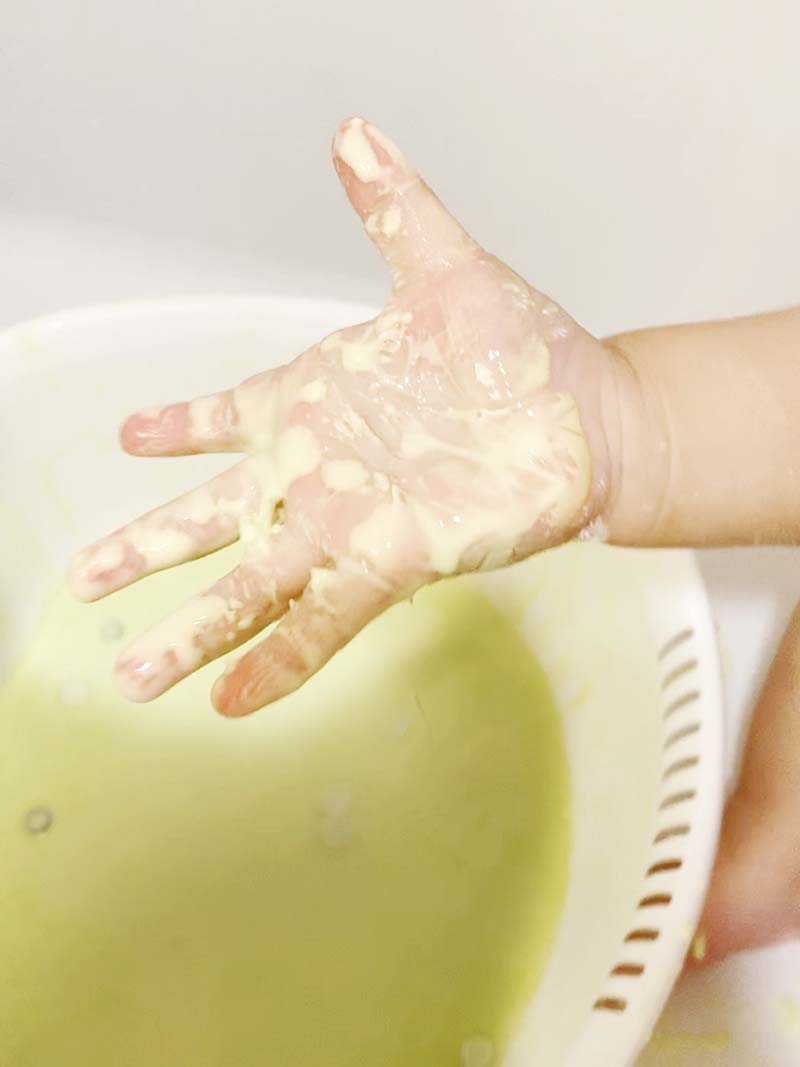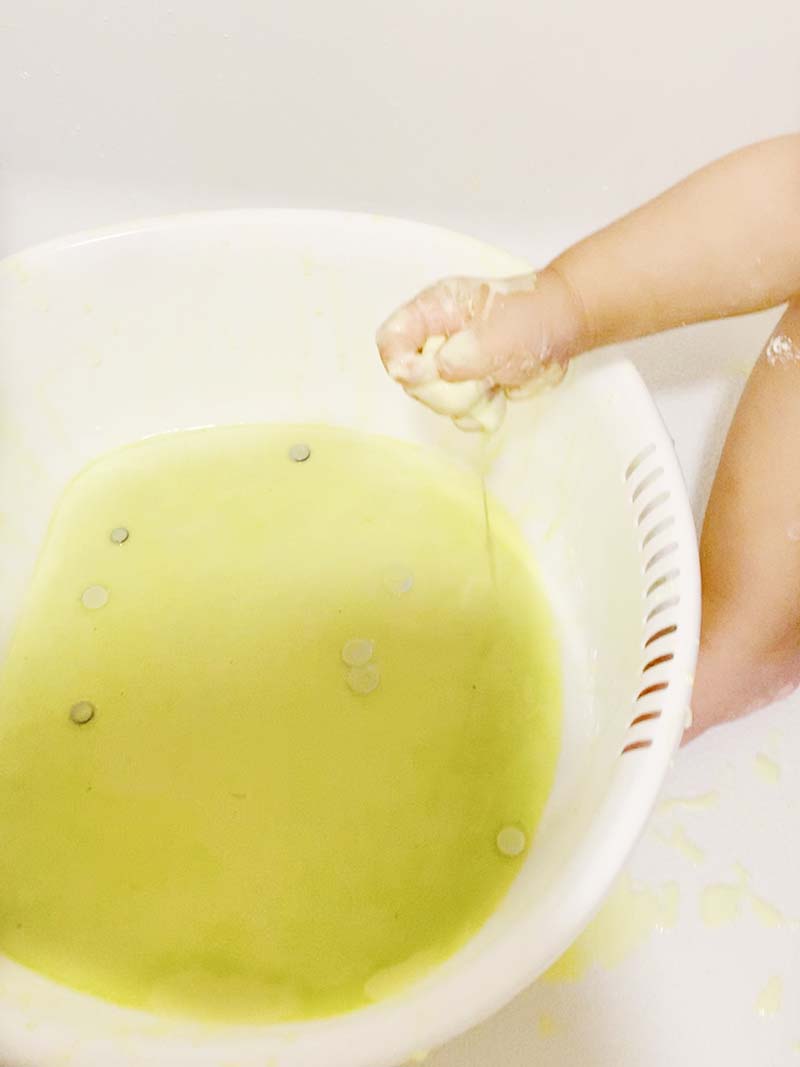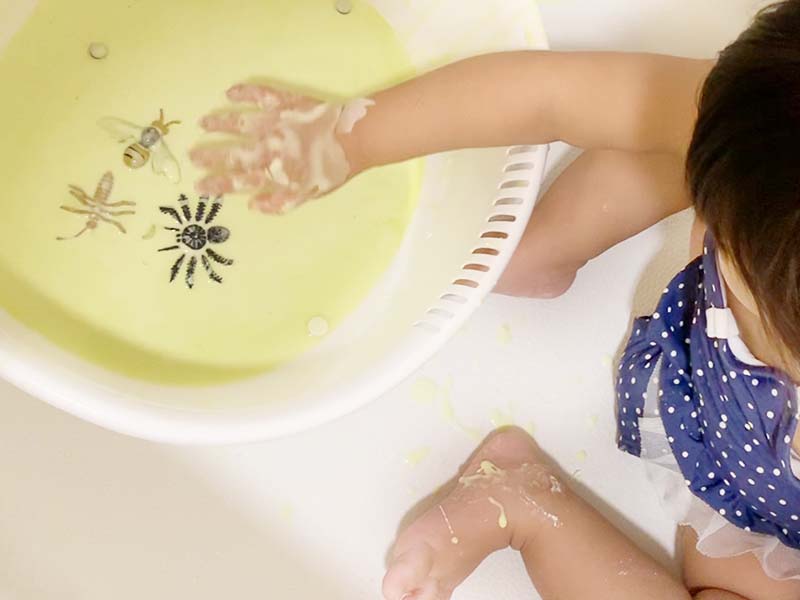Montessori education seeks to stimulate, develop and refine the five senses -- visual (sight), tactile (touch), auditory (hearing), olfactory (smell), and gustatory (taste) senses -- and in doing so, provide children with myriad learning opportunities.
Children are particularly receptive to sensory play from ages 2 to 6, which underscores the importance of providing children within this age group varied and extensive sensorial experiences.
How does sensory play benefit children?
More and stronger neural pathways in the brain are developed as children engage in sensory play, allowing them to excel in future cognitive tasks.
Sharpened senses, observation skills and attention to detail. After honing basics of sensory processing, children move on to hone their senses and observation, noticing differences in sights, sounds, taste, textures and smells. The attention to detail sets children up for learning of complex subject matters in science, technology, engineering, the arts and mathematics (STEM).
Strong foundation for problem solving, critical thinking and reasoning is built through dynamic sensory learning.
10+ Montessori-inspired Toddler Activities to Engage the Five Senses!
The list below provides ideas for multi-sensory toddler activities that develop and engage the five senses, namely visual (sight), tactile (touch), auditory (hearing), olfactory (smell), and gustatory (taste) senses.
Activities for Honing Visual Sense (Sight)
The visual sense is our dominant sense which we utilize in our everyday lives. Sorting by color, size, shape and categories (e.g. farm animal figurines vs. wild) enables children to leverage and refine their visual senses. Sorting improves visual discrimination and are generally self-correcting activities that teaches children to pay attention to similarities and differences.
Below shares simple color, size and shape sorting activities that are homemade and easy to set up.
1. Popsicle Stick Color Sorting
The idea for this self-correcting color sorting activity originated from Happy Tot Shelf's DIY color matching rainbow toy, using popsicle sticks and a decorated cardboard box.
For toddlers starting out in color sorting, you might like to start with 2 colors. After ample color sorting practice, you could introduce more colors to increase the challenge.



2. DIY Nesting Size Sorting Toy
Size sorting improves spatial awareness too, as toddlers figure out the interrelationships between objects and how they fit in with one another.

This DIY nesting toy puts nested recycled container lids and caps together and they adhere to one another via velcro dot stickers on touching surfaces.

Refer to 10+ Everyday Items for Montessori-inspired Size Sorting for household items and nature-based loose parts you could quickly repurpose for other size sorting activities.
3. Shape sorting
This idea originated from Busy Toddler.

I love how space-saving this activity is, leveraging the wide metallic surfaces of the refrigerator/dishwasher/oven and repurposing existing fridge magnets.

I also tried this activity with Magnatiles, which come in squares and different types of triangles. Squares and triangles are familiar shapes to toddlers and they tend to be more inclined to sort familiar shapes.
Note: Since discovering Montessori, I conscientiously opt for wooden, nature-based toys and avoid plastic toys. Magnatiles and Lego are the exceptions, because of their heirloom quality (could be passed down generations and blessed to other families when outgrown) as well as unique educational uses.
Refer to Montessori Primary Guide for traditional Montessori visual sense activities like the Pink Tower, Brown Stairs and Color Tablets.
Activities for Honing Tactile Sense (Touch)
"Touch is the central interface between our bodies and the outside world."
When children feel something with touch and their tactile system, they gather informative cues about physical properties of the objects around them -- soft or hard? Dry or wet? Hot or cold?
Children often use their fingertips to explore tactile environments, because it is a body part with a high density of specific nerve endings, making them extremely sensitive to all tactile stimuli.
The following are easy activities that encourage toddlers to explore and process new tactile materials with their hands.
5. Oobleck Rescue
Oobleck is very easy to create, using corn starch to water in a ratio of 2:1. I particularly like the rainbow oobleck from Busy Toddler, which has strong vivid colors that are appealing to young children.
Oobleck is a non-Newtonian fluid; it has properties of both liquids and solids. When pressure is applied, it feels like a solid. When we let go, it becomes a liquid, sliding off the fingers.
When my toddler was first exposed to this messy, sticky, wet and slimy material, avoidance behavior kicked in and she resisted getting near the oobleck. Only after a few demonstrations of how it transforms from solid to liquid and vice versa did she eventually warm up to explore and investigate the oobleck.


I extended play by reframing the activity as a rescue mission whereby she had to save spiders and bees stuck in the gooey mess.

The mission kept her engaged and appealed to her sense of symbolic play, as she created stories of how they came to be stuck.

6. Play Dough
Play dough is often underrated but it is truly a wonderful tactile, hands-on resource for children to feel, shape and manipulate.
I recommend using and in fact making homemade play dough. I also strongly advocate involving children in the play dough making process!
This is because play dough making provides a range of sensory provocations. It stimulates the sense of touch as each ingredient changes the physical properties of the play dough and it is fascinating to see all the ingredients integrate. The sense of sight is engaged as white dough changes color with addition of food coloring and the sense of smell is utilised when essential oils are added to the play dough.
In the play dough making process, I describe the textures for my toddler to learn new vocabulary (e.g. addition of salt makes the dough grainy and rough, water makes it gooey and slimy, repeated kneading makes it softer and smoother). The creation of this simple yet transforming material can powerfully engage children’s senses.

Recipe for my homemade play dough (without cream of tartar):
The original recipe is from The Imagination Tree but I modified it since I didn't have cream of tartar.
Ingredients:
- 2 cups of toasted all-purpose flour (heat treatment to lower salmonella risk)
- 2 tablespoons of coconut oil
- 1/2 cup of fine table salt
- 2 tablespoons of lemon juice (substitute for cream of tartar)
- 1 cup boiling water (needed for salt to integrate)
- Food coloring (I use Watkins because the colors are derived from vegetables and spices)
- (Optional) For aroma, 2-3 drops of lavender essential oil or 1 tablespoon of cocoa powder. For texture, add lavender buds. For enhanced visual effect, add glitter into play dough.

Steps:
- Mix the flour, lemon juice and oil in a large mixing bowl
- Add salt and food coloring to the boiling water then stir continuously to dissolve salt
- Mix colored salt mixture into dry ingredients until a dough is formed
- Allow the dough to cool before kneading it until you achieve desired consistency. Add small increments of flour until it is no longer sticky.
Tools to promote tactile play -- squeezing, flattening, rolling, cutting, tearing and squishing of play dough -- could be provided too, like rolling pins, knives and cookie cutters.


For longer tactile play with play dough, try these creative ideas:
- Use silicon ice cube moulds to form stackable play dough blocks.



Play dough blocks are sturdy and dense and can be used to create towers and figurines.

- Supply open-ended loose parts for children to explore interrelationships of these items with play dough and the malleability of play dough. I provided dinosaur figurines and made dinosaur 'fossils' with my toddler.



7. Duplo LEGO Brick Mud Bath
Foam and mud are interesting tactile sensations for children to experience. A 'mud bath' combines these two sensorial experiences.

The mud can be made with a mixture of toasted all-purpose flour, cocoa powder and water. Foam can be made with baby soap added to water and then whisked on high speed with an electric mixer.



8. Themed Stereognostic Bags
Stereognostic Bags (also known as Mystery Bags) help to develop children's tactile senses (ability to identify materials based on touch alone) and enhance material visualization.
I usually make themed stereognostic bags. For instance to commemorate Easter, I made a stereognostic bag with a soft bunny toy, a carrot wooden toy, measuring spoons (associated with hot cross bun making) and sheep figurines (associated with springtime on farms).


I would encourage my toddler to select an object inside the bag, feel its texture, shape and size, and name the object. Then, my toddler would take it out of the bag to place on the table, and we determine if the object was correctly identified. I like the way it gives my toddler a sense of accomplishment to have her hypothesis proven right.
This activity also promotes language development as rich vocabulary could be used in the play conversation.
Refer to Montessori Primary Guide for traditional Montessori tactile sense activities like the Touch Boards, Touch Tablets and Fabrics.

Activities for Honing Auditory Sense (Hearing)
9. Nature Inspired Sensory Shakers

I created 3 sensory bottles to mimick diverse ecosystems -- garden with honeybees, forest and ocean.

I added seashells into the ocean-themed sensory bottle shaker to create a rattling sound.


I used dyed green rice in the forest-themed sensory bottle shaker to produce a rattling sound.

For the garden-themed sensory bottle shaker, corn meal was used (as representation for pollen), which also creates a sound when the bottle is shaken.

Refer to Montessori Primary Guide for traditional Montessori auditory sense activities like the Sound Boxes and Bells.
Activities for Honing Olfactory Sense (Smell)
10. Smelling Bottles
Typically in Montessori classrooms, the olfactory activity involves presenting two sets of bottles with matching smells for children to smell and match. More about the traditional Montessori smelling bottle presentation on Montessori Album.
For my setup, the scents I chose for my toddler to identify were truffle (from truffle oil), eucalyptus (from essential oil), lavender (from buds) and coffee (from coffee beans) -- all distinctive and familiar scents.
After the smell matching activity, I wanted to engage the visual sense by way of providing a visual reference for the origins of the scents. I believe using the visual sense in addition to the olfactory sense reinforces the knowledge gleaned regarding items and how they smell.
My non-Montessori activity extension involved me placing the lavender buds and coffee beans in translucent satchets so my toddler could investigate the contents through the mesh as well as providing image cards of truffle, eucalyptus, lavender and coffee beans for a second matching exercise.



Refer to Montessori Primary Guide for traditional Montessori olfactory sense activities like the Sound Boxes and Bells.
Activities for Honing Gustatory Sense (Taste)
11. Tasting Platter

My goal for this gustatory tasting platter exercise was to provide my toddler with vocabulary for the 5 basic taste sensations -- sweet, salty, sour, bitter and unami. These are the food items I used for the different tastes:
- Sweet -- Honey
- Salty -- Seaweed
- Sour -- Lemon and blueberries
- Bitter -- Herbal soup infused with cordyceps and cocoa powder
- Unami -- Cheese
I included more food samples for the sour and bitter taste sensations, because they are not common in my toddler's diet and I hoped to give her a better understanding of the sour and bitter tastes.
In addition to the 5 basic taste sensations, I included fish steamed with ginger slices to introduce the sensation of spiciness. I explained spiciness as a pain sensation and 'flavor' rather than a taste sensation as it is not produced as a result of the combination of the 5 basic tastes.

Needless to say, my toddler enjoyed the honey and seaweed sampling the most.


A is for Artichoke: A Foodie Alphabet book by America's Test Kitchen was a helpful book to pair with this activity as it explained unami and provided lots of vocabulary for kitchen and food words.

After introducing more taste platter activities to develop a basic understanding of the 5 taste sensations, I would advance to the traditional Montessori tasting bottles to further hone my toddler's ability to discriminate tastes.
Resources for Sensory Learning
- Mama's Happy Hive has a great book recommendation for learning about the five senses. Prior to the activities, book reading about the five senses lays the foundation for toddlers to understand what the senses are, the different types of senses and how we use our senses in daily life.
- Montessori Primary Guide for useful step-by-step presentation information for five senses activities.
To follow our play adventures, follow our Instagram, Pinterest or Facebook Group.

Note: I am not trained in Montessori, so all of the above information is derived from my own research and understanding of the Montessori method as well as my education and experience working with young children.

